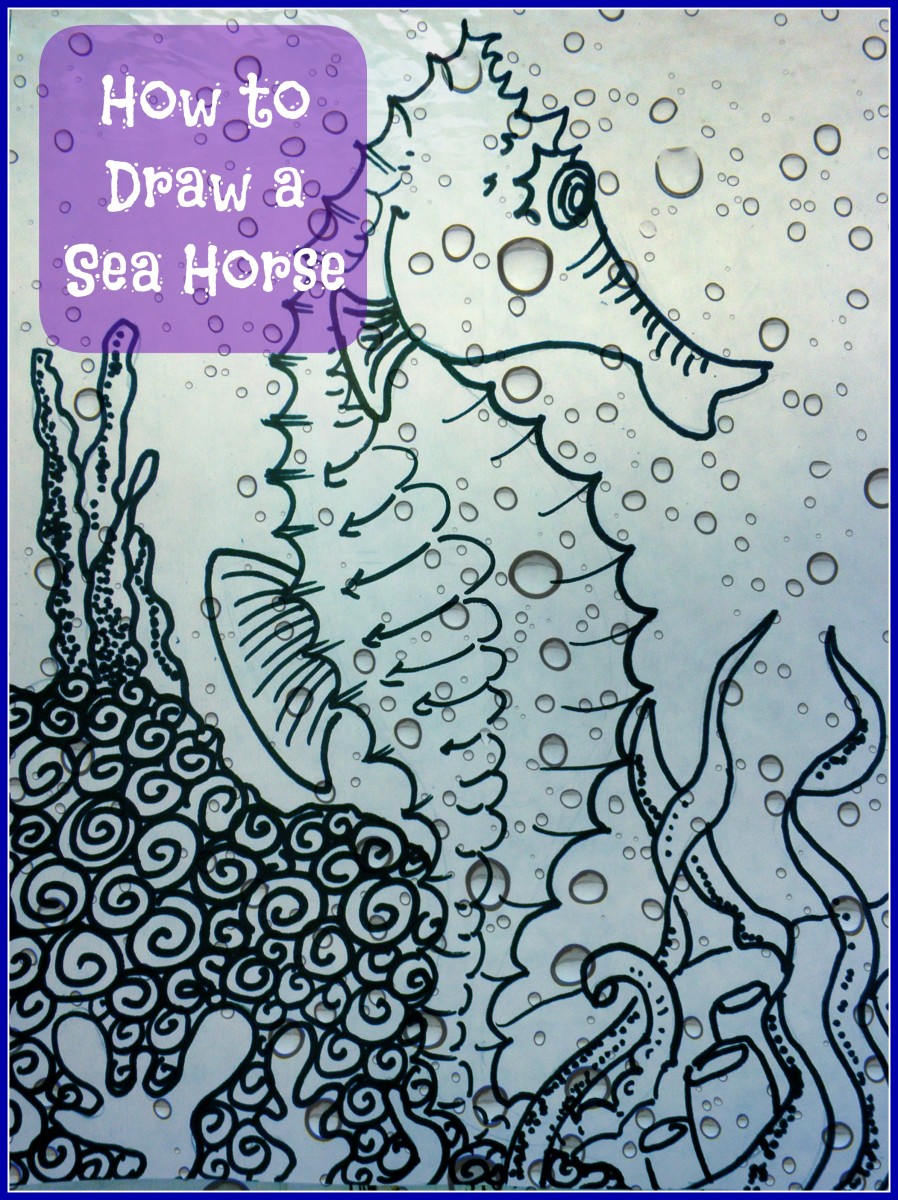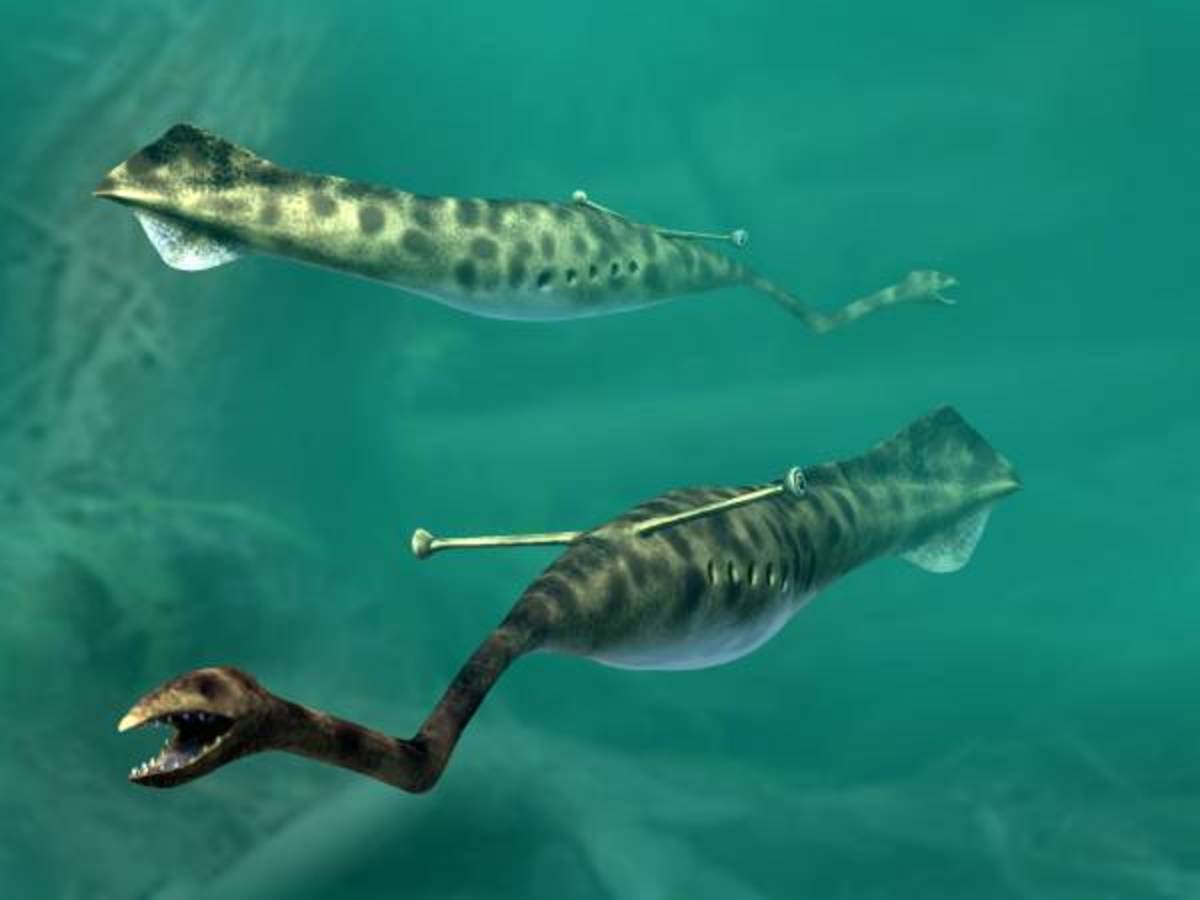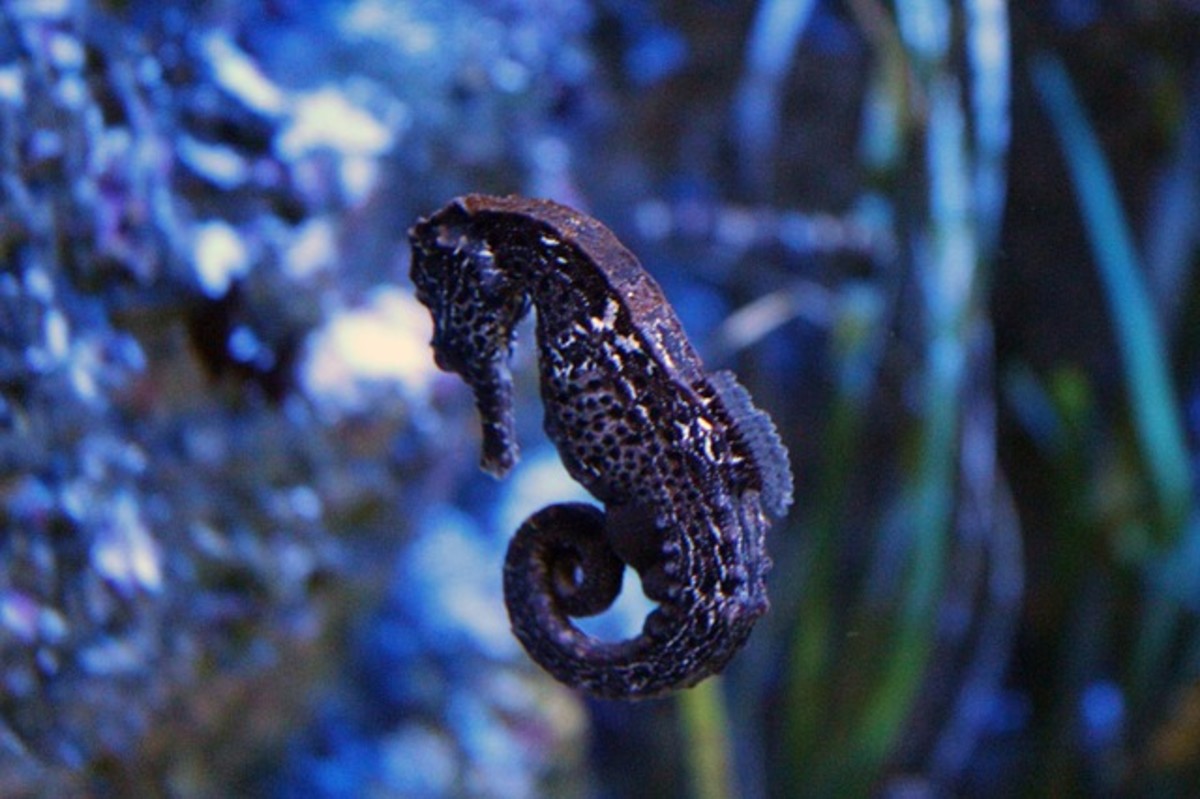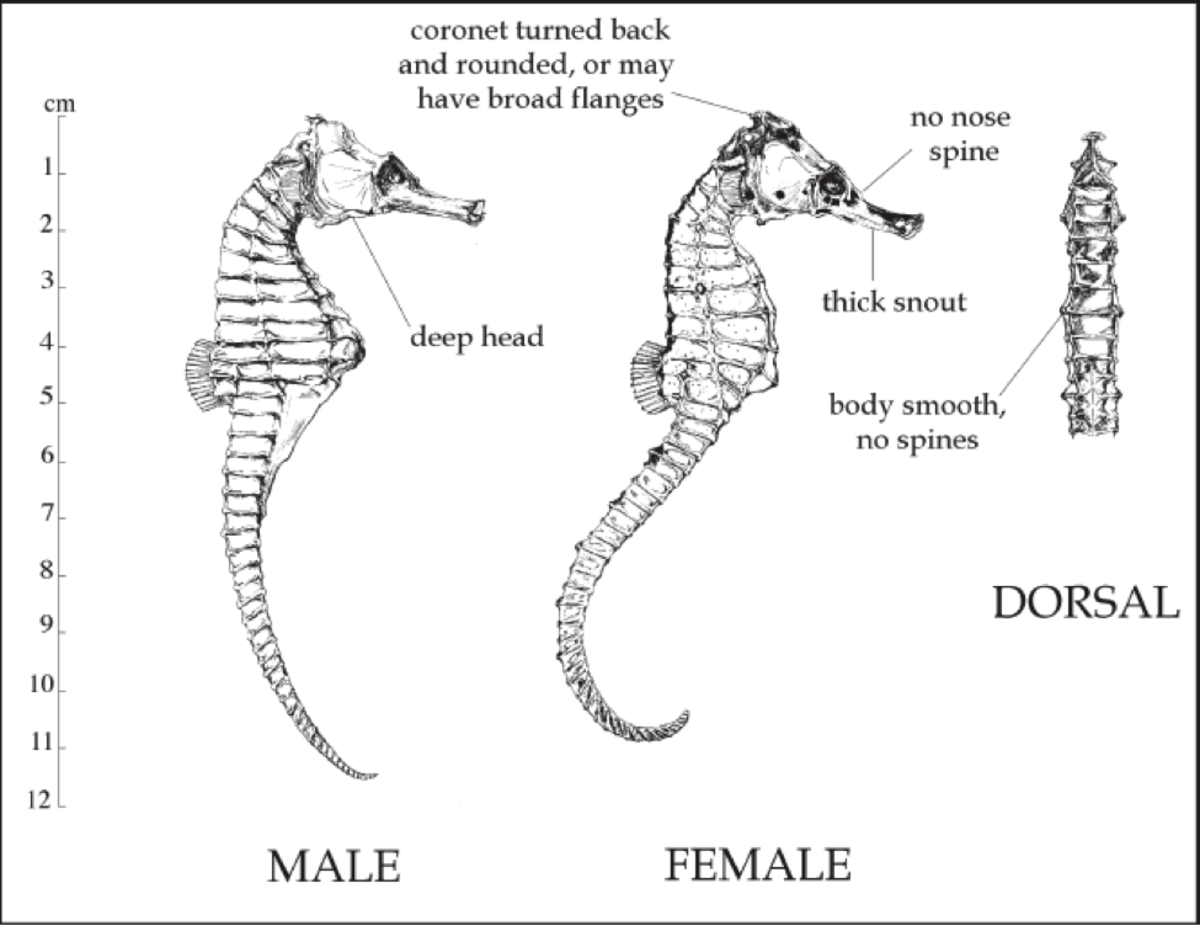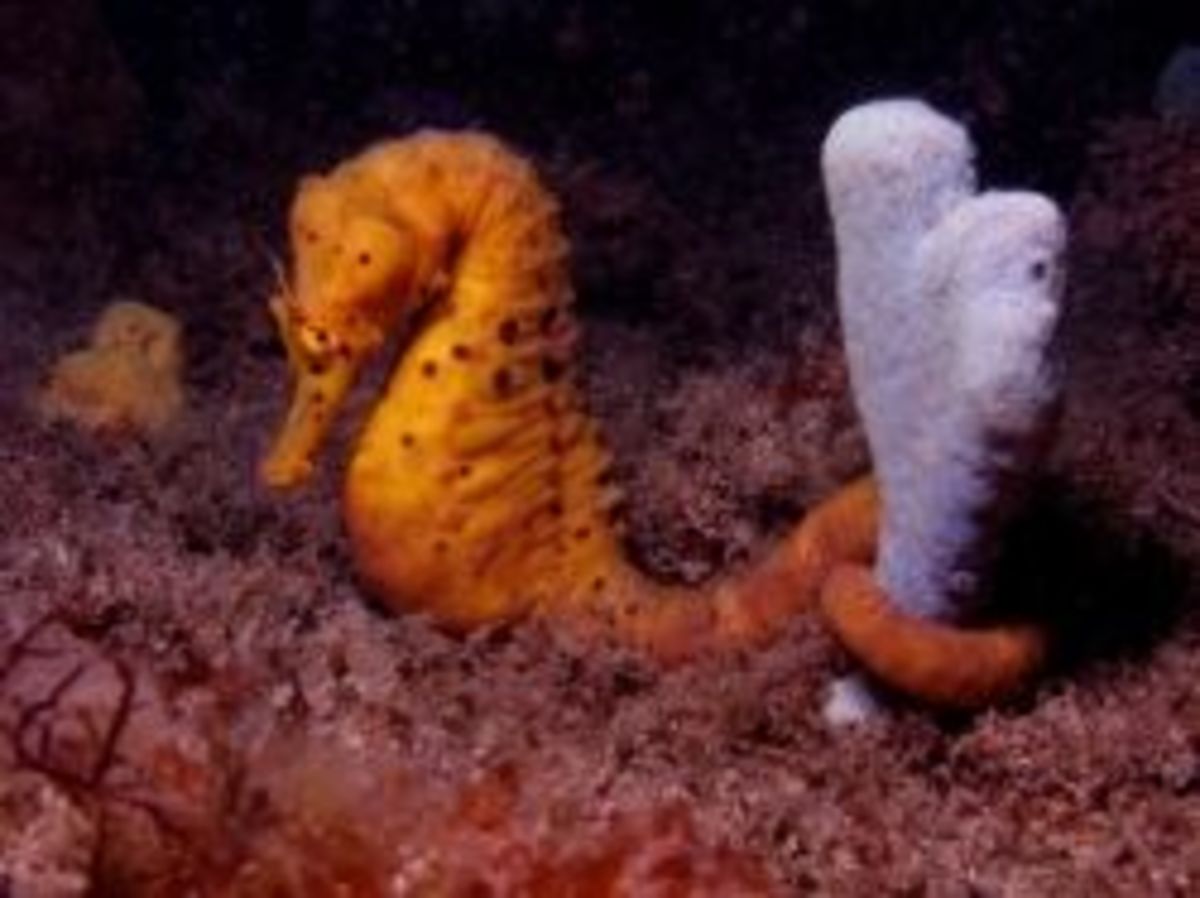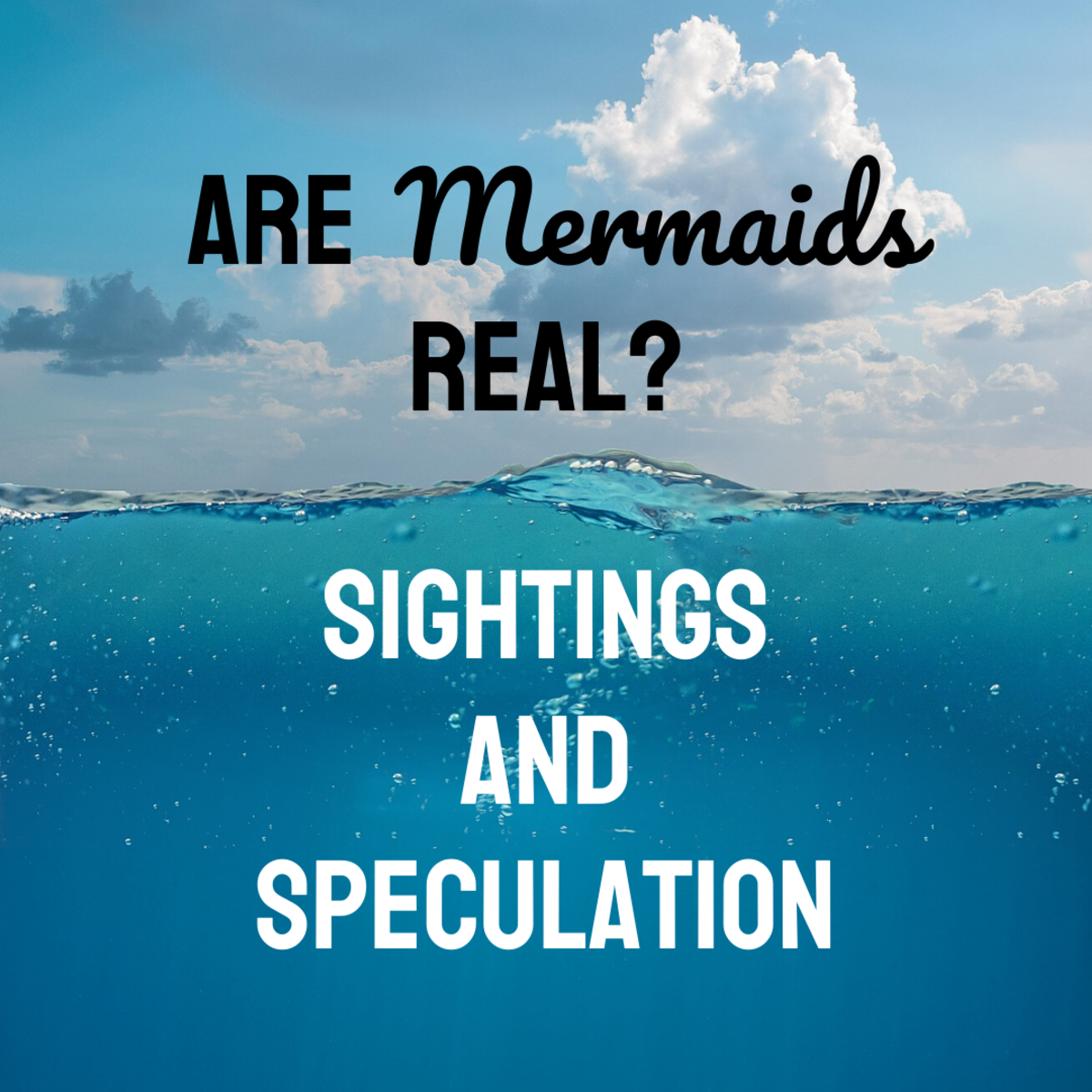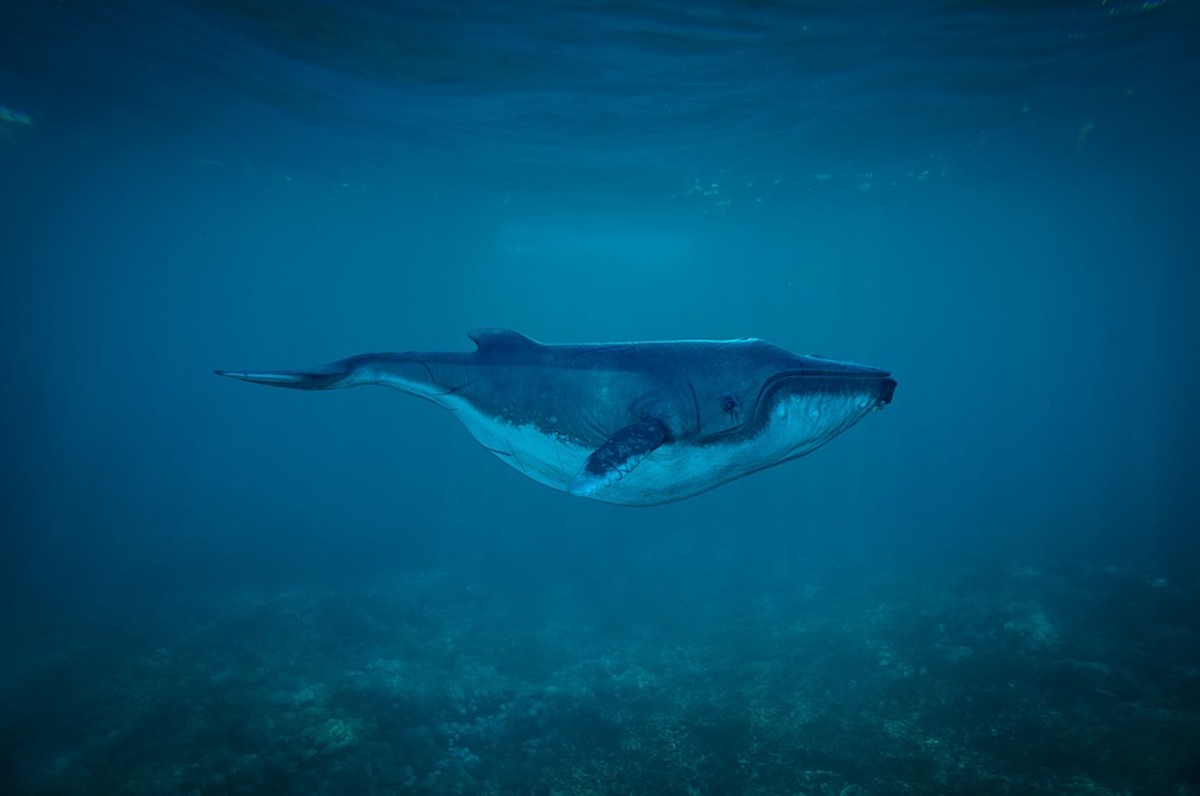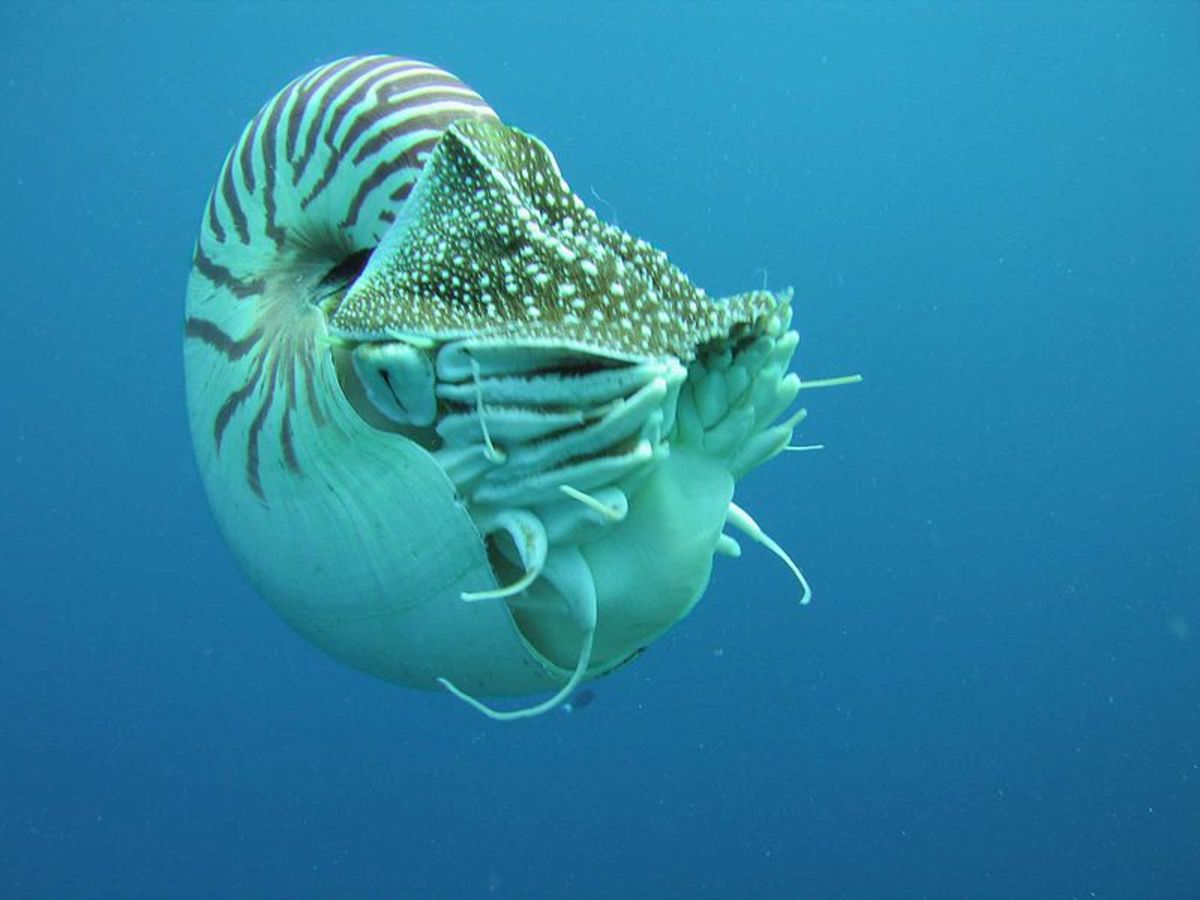- HubPages»
- Education and Science»
- Life Sciences»
- Marine Biology»
- Marine Life
Hawaiian Seahorse
Seahorses are a colorful, whimsical fish found in warm tropical waters worldwide. These fish come in shades of red, brown, pink, yellow, orange, and beige. They also range widely in size, from one to fourteen inches in body length. In Hawaii, seahorses are found in coastal reefs and pelagic habitats near buoy. As anatomically modified cousins of pipefish, seahorses belong to the Order Sygnathiformes.
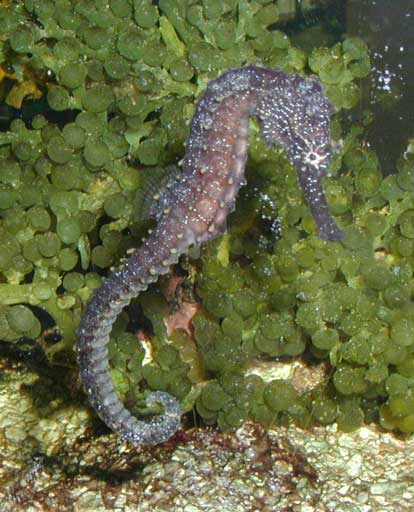
Seahorses fall under the family Syngnathidae, which also includes pipefish and leafy sea dragons. The Latin words describing their Family mean “fused jaw”, an anatomic trait common to all members of the Family. The scientific name for seahorses is Hippocampus sp. A hippocampus was a mythological aquatic horse in Ancient Greek mythology; a fitting name for an aquatic animal with an equine resembling head and neck. According to NOVA, there are about 35 known species of seahorse. The species of seahorse native to Hawaii is Hippocampus kuda, or mo‘olio in Hawaiian. In all ecosystems, seahorses are anatomically unique fish well adapted to their habitat.
Seahorses have slender bodies with thin elongated snouts, prehensile tails, a distinctive crest on their head called a coronet, and only one swimming fin. They are able to easily camouflage with the vegetation and live corals where they live, both through coloration and through simply hanging on with their tails and drifting with the current.

Perhaps the most well known characteristic of seahorses is that the males are the ones that get pregnant. Seahorses are Ovoviviparous, young starting from eggs but birthed as live young (SeaWorld). Eggs are placed into the males pouch, are fertilized internally, and he carries them until they hatch out, usually in two to three weeks (NOVA). According to Monterey Bay Aquarium, seahorses have adapted to form long term mating pairs, usually for life. In addition to being well suited to their habitat, and their unique breeding, seahorses are also uniquely adapted for feeding.
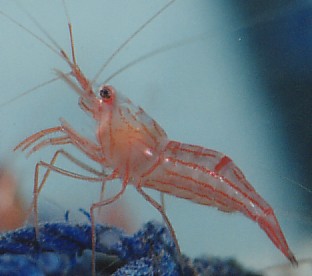
Seahorses consume small crustaceans and fish as food (SeaWorld). They can eat something six times the diameter of their mouth, sucking up prey like a vacuum cleaner. With their camouflage, seahorses are able to simply wait for small animals to drift by to feed. Unfortunately, seahorses are slow swimmers that are easily caught by predators. If spotted through their impressive camouflaging, a seahorse is unlikely to escape from the its many predators, which include large fish, sharks, eels, rays, and sea snakes. Although it has many natural predators, the main threat to seahorse survival in the wild is human harvesting.
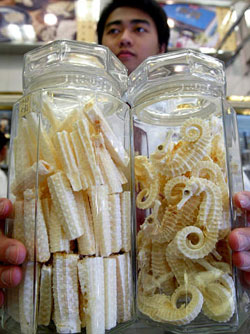
Humans are the reason why seahorses are endangered. Humans collect seahorses for aquarium displays and traditional medicine in Asia. Due to the traditional medical trade: “Southeast Asia's seahorse populations have slumped by up to 70 per cent in the past decade (Parry-Jones, 1998).” Seahorses are unique types of fish that are uncommon in form, and are well adapted to their habitats in terms of coloration, anatomy, and breeding behavior. The number one survival threat to seahorses is humans, and it is preventable. Seahorses are unique creatures that should be saved from extinction.
Works Cited:
“Kingdom of the Seahorse”, NOVA Program, PBS, 1997, <http://www.pbs.org/wgbh/nova/seahorse/>
Parry-Jones, Rob, Amanda Vincent, “Can we Tame Wild Medicine?“, http://seahorse.fisheries.ubc.ca/pdfs/parryjones_and_vincent1998_newscientist.html
“Saving Seahorses in the Sea”, Monterey Bay Aquarium, www.mbayaq.org/efc/efc_se/se_ssh_sea.asp
“Seahorse”, National Geographic Society, 2008,
<http://animals.nationalgeographic.com/animals/fish/sea-horse.html>
“Seahorses”, SeaWorld Animal Bytes Database, 2008,
<http://www.seaworld.org/Animal-info/animalbytes/animalia/eumetazoa/coelomates/deuterostomes/chordata/craniata/osteichthyes/syngnathiformes/seahorses.htm>

